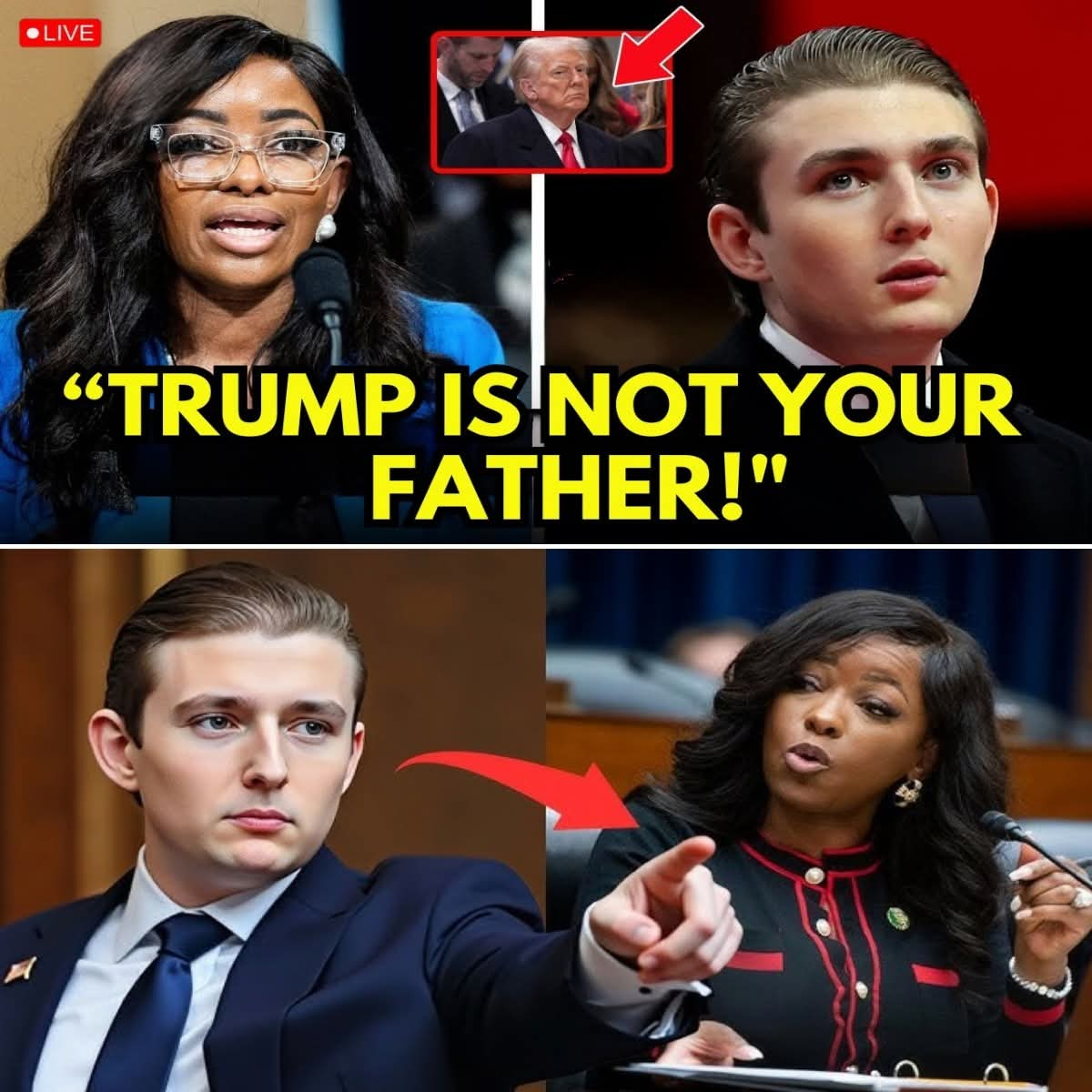NFL
JASMINE CROCKETT DROPS A STUNNING ONE-LINER THAT “FREEZES” B.A.R.R.O.N T.R.U.M.P — A HOLLYWOOD-STYLE MOMENT OF SHOCK, SILENCE & ESCALATING DRAMA THAT LEAVES THE ENTIRE ROOM REELING ⚡ It started as a tense but predictable committee exchange—stiff voices, cautious wording, nothing out of the ordinary—until a shocking turn snapped the entire room into silence. In the middle of a heated back-and-forth, J.A.S.M.I.N.E C.R.O.C.K.E.T.T unleashed a razor-sharp one-liner that left B.A.R.R.O.N T.R.U.M.P visibly frozen, triggering gasps inside the chamber and a digital explosion within minutes. The full clip is going viral, and fans can’t believe how fast a routine hearing morphed into a Hollywood-style moment of shock now trending across platforms. Insiders claim the behind-the-scenes reaction was even more electric. Staffers were reportedly “leaning over each other’s desks,” replaying the instant Crockett delivered the line, while senior aides whispered that Barron was “caught completely off guard.” One source said producers monitoring the hearing feed were stunned at how cleanly the one-liner landed, calling it “the kind of moment you can’t script.” Now, as viewers dissect every stunned expression, every awkward silence, and every frame of Crockett’s mic-drop delivery, the drama is only escalating. The internet can’t stop talking—watch before it’s taken down…

JASMINE CROCKETT DROPS A STUNNING ONE-LINER THAT “FREEZES” B.A.R.R.O.N T.R.U.M.P — A HOLLYWOOD-STYLE MOMENT OF SHOCK, SILENCE & ESCALATING DRAMA THAT LEAVES THE ENTIRE ROOM REELING ⚡chuong
Uncategorized November 24, 2025 · 0 Comment
In a hearing room usually defined by procedural monotony and predictable partisan choreography, it takes very little to disrupt the equilibrium. But on Tuesday, the disruption was not only sudden—it was cinematic. A single line delivered by Representative Jasmine Crockett, a Texas Democrat known for her unflinching rhetorical style, became the center of a political whirlwind after video of the moment circulated widely online. The brief exchange—captured, clipped, subtitled, and disseminated across platforms within minutes—shows Ms. Crockett delivering a swift, surgically precise one-liner that leaves Barron Trump, who appeared at the hearing as a symbolic representative for a youth-focused initiative, momentarily speechless.
What happened next was not merely silence. It was the kind of stunned pause that, in today’s political ecosystem, instantly becomes content: replayed, memed, dissected frame by frame. Though the hearing continued, that moment became the gravitational center of the day’s political conversation, eclipsing the formal agenda and triggering a familiar cycle of commentary, amplification, and outrage.
The clip’s trajectory was immediate. Within an hour, it trended on TikTok, X, and YouTube; by midday, it had spawned hashtags, side-by-side recreations, and blow-by-blow analyses from users who slowed the footage to read facial expressions. The fascination was not solely rooted in partisan enthusiasm. It was the theatricality of the pause—the wide-eyed stillness, the quick dart of the camera, the almost imperceptible reaction from committee members—that gave the exchange its viral DNA.
Inside the hearing room, aides and staffers exchanged quick glances that blended surprise with anticipation. One aide, who spoke on condition of anonymity because they were not authorized to describe internal reactions, said the moment “felt like a punctuation mark no one saw coming.” Another staff member described a “visible shift in the room’s temperature,” as if a casual sparring match had suddenly turned high-stakes. Producers monitoring the committee feed from media booths reportedly replayed the segment repeatedly, unsure whether the punch of the line had been intentional or simply the product of perfect timing.
Representative Crockett has long been lauded—by supporters—and criticized—by detractors—for her ability to disarm critics with precision. Her supporters framed the moment as an example of her rhetorical agility. Her critics dismissed it as unnecessary grandstanding. Yet both groups, perhaps unwittingly, contributed to its upward trajectory: every critique, every defense, every quote-tweet, pushed the clip further into the center of the nation’s political bloodstream.
The presence of Barron Trump, now an adult and increasingly visible in political spaces, added another layer of complexity. Because he has spent much of his life beyond the public political arena, his moments on camera inevitably draw outsized scrutiny. The freeze—brief, controlled, and arguably understandable in a contentious congressional setting—quickly became the subject of interpretive debate. Was he caught off guard? Choosing restraint? Momentarily confused? The video offered limited answers; the internet supplied infinite theories.
Beyond the theatrical quality of the exchange, analysts noted that the moment reflected a deeper shift in political communication. Congressional hearings—once dominated by policy discussions and procedural technicalities—now frequently function as stages for content creation. Members often speak with as much awareness of the cameras as of the witnesses themselves. Viral potential is no longer accidental; it is a currency.
Still, observers cautioned against overstating the long-term implications of the moment. “Viral clips burn bright and fast,” said a political media scholar at Georgetown University. “What matters is not just the clip itself, but whether campaigns or coalitions turn it into narrative infrastructure.” In this case, both Democratic and Republican strategists appeared to be studying the clip’s reception. One senior strategist described the moment as “symbolically potent—but only if it becomes part of a larger story.”
In the hours after the clip’s release, statements trickled out cautiously. Crockett’s office emphasized policy issues rather than the exchange. Trump-aligned voices described the moment as “overblown distraction.” Neither side escalated, perhaps aware that the internet had already done the escalating on its own.
By evening, the clip had taken on a life far beyond its congressional origin. Reaction videos multiplied. High-profile influencers offered dramatic reenactments. Late-night hosts previewed monologues that would revisit the moment with comedic precision. What remained, at the end of the day, was a now-familiar pattern: a fleeting congressional exchange transformed by the velocity of digital culture into a national talking point.
Whether the moment influences voters, policy debates, or broader political narratives is uncertain. What is clear is that the exchange revealed, once again, the porous boundary between governance and entertainment—and how swiftly an ordinary hearing can become a headline, a meme, a cultural flashpoint.












